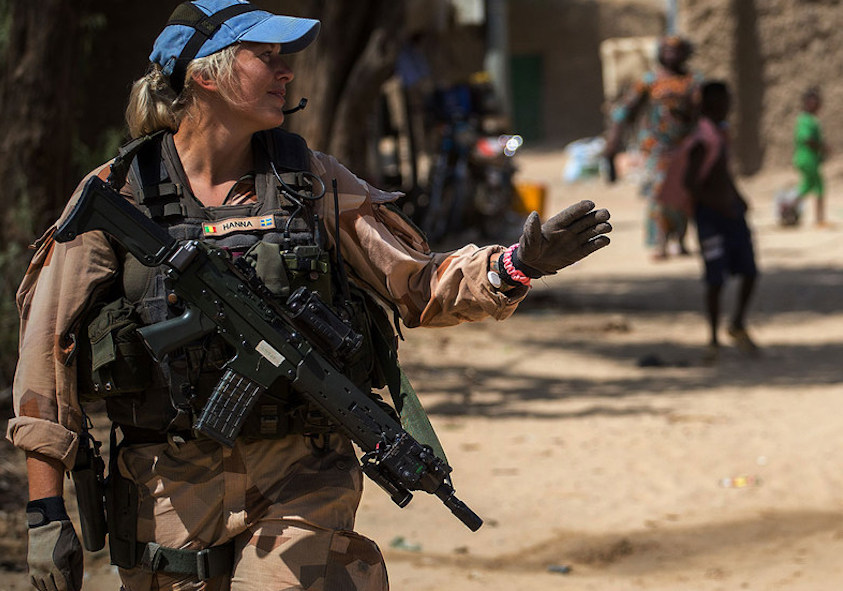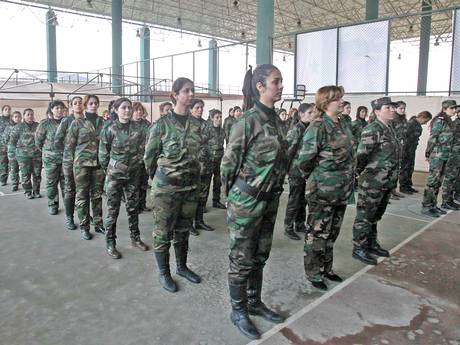Conscription in of itself has proven to be a controversial federal practice throughout history, creating sharp divisions among Canadians in both world wars. The extensive debate and backlash by politicians and the public on the subject throughout the 20th century has made the prospect of compulsory enlistment in Canada unlikely. Though neither World War One nor Two established any real conversation on female conscription in Canada, other states around the world have since incorporated gender-neutral conscription practices in their defence policies. Though some see female conscription as an irrefutable demonstration of gender parity progress, some women’s groups regard it as a misinterpretation of true equality.
While Sweden has had periods of mandatory conscription for over a century, the most recent reactivation came in 2018 after an eight year suspension of mandatory service and —for the first time — included drafting women. The motivation to reinstate the draft came from a mix of an undermanned Force and increased Russian military expansionism in Eastern Europe following the annexation of Crimea in 2014. A self-descriped feminist government, Sweden’s national self image and international reputation has prided itself as a global leader in gender equality since the 1970s. This most recent policy decision to establish a gender-neutral conscription system has been justified by the Swedish government as consistent with its ranking as one of the most gender equal countries in the world. This modern adaptation to the historic practice has been well received in the country, with 70% of Swedes in support of the latest return to conscription. It is not only equality in opportunity and duty, officials contend, that the gender-neutral model offers, but also a way to strengthen the military’s specializations and capabilities through as wide a recruitment process as possible.
Despite this, military organizations in Sweden and around the world have long records of male-domination, both numerically and symbolically. As a foremost federal institution within most countries, the presence, rights and obligations of women and men in the military have substantial societal implications beyond local workplace environments. The elimination of discrepancy in national duty for men and women has been interpreted by some as a major victory in the fight for gender equality, while other perspectives in the ongoing feminist debate believe that equality can never be achieved in an organization that has historically and systemically focused on male participation.
Women’s groups in Norway, another nordic country that conscripts women, have denounced the aforementioned practice as demonstration of gender parity and counter that “women and men do not have to be alike or do the same things to be equal”. These organizations argue that gender-neutral conscription is an oversimplified policy tool that disregards womens’ lived experiences and contributes to growing inequality by adding hardship to an already disproportionately burdened group in society. This alludes to the larger discussion underway on servicewomen being asked to join in greater numbers to an institution that was not designed with them in mind, nor is the institution being fundamentally changed to accommodate their inclusion.
The Sweden case is inspiring debate not only on the matter of what gender equality defence policy looks like, but the use of women itself to legitimize the controversial practice of conscription. Feminism as a school of thought has traditionally incorporated an undercurrent of pacifism, so the question of inclusion or exclusion in the military draft presents an ideological challenge for many on both sides of the debate. Acknowledging this, some scholars are redirecting the conversation on Sweden’s gender-neutral conscription to a broader discussion on the militarization of society and the forced participation of civilians in conflict they may wish to have no part in – regardless of their gender.
The author wishes to recognize that this article’s language relies heavily on binary terminology and is in an incomplete assessment of the realities of gender-diverse soldiers in the military.



